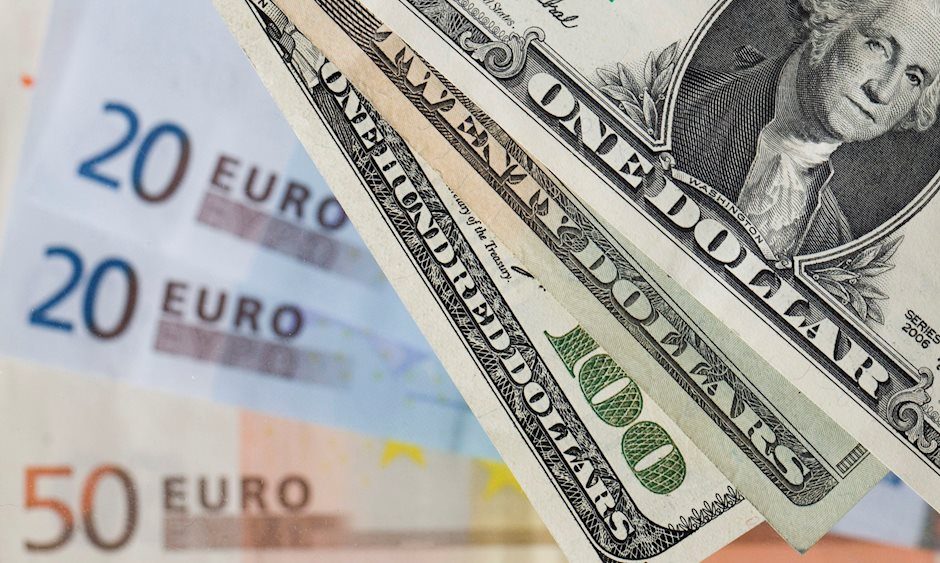EURJPY – the yen continues to strengthen – rumors about 'helicopter money' increase uncertainty

EURUSD - US interest rate expectations remain decisive driver
EURJPY – the yen continues to strengthen – rumors about "helicopter money" increase uncertainty
EURCHF – Swiss franc remains relatively stable
Brexit referendum had only short-lived impact on EURUSD
EURUSD responded to the surprising outcome of the Brexit referendum with a significant appreciation of the dollar. However, as sentiment in the financial markets stabilized relatively quickly again, US interest rate expectations promptly became dominant again; particularly in view of the fact that economic data indicated that the economy of the euro zone has (so far) suffered no damage.
Our expectation remains that the next US rate hike will be implemented in December, which should lend some support to the dollar towards the end of the year. After the recently released US labor market data, which were very strong, there remains a risk though that the Federal Reserve will act in September already. If the next payrolls report exhibits strong momentum again, a rate hike in September could be possible. However, given the Fed's cautious approach to date, we believe that this remains less probable than a December rate hike. Should it nevertheless happen, the dollar would probably strengthen earlier than we are currently expecting. Even in that case, the advance should be moderate though. The US presidential election campaign plays no noticeable role for the dollar at the moment, which may be due to the fact that Donald Trump is currently trailing significantly in polls. Should this change, the associated political uncertainty could weigh on the dollar to some extent. Per experience political factors in the US have no persistent impact on the exchange rate though. Thus the focus of currency markets should remain on economic developments and with that the outlook for interest rates, while any reaction of the exchange rate to political events is likely to be temporary.
JPY – the yen continues to strengthen – rumors about "helicopter money" increase uncertainty
As was to be expected based on leading indicators, Japan's economy stagnated in Q2 2016, after exhibiting surprisingly strong growth of +0.5% q/q in Q1 2016.
Sentiment indicators currently point at least temporarily to a slight improvement of the situation in Q3 2016. For the year 2016 as a whole the IMF expects Japan to post GDP growth of +0.3%.
The most important event in July was the clear election victory achieved by prime minister Shinzo Abe's LDP. The markets interpreted this as a sign that additional fiscal and monetary policy measures would be in the offing in Japan.
These expectations were stoked further by press reports about a meeting between former Fed chairman Ben Bernanke - who recently created a stir with a blog entry about the introduction of "helicopter money"1 - and the governor of the BoJ shortly after the election. Essentially "helicopter money" would involve a ‘money-financed fiscal program', in other words, fiscal stimulus financed by the central bank. Contrary to the approach pursued hitherto, this fiscal program would not lead to an increase in public debt, as it wouldn't be financed by issuing new government bonds, but with money the central bank would make directly available to the government. In its last meeting on 29. July, the BoJ eased monetary policy only marginally, but announced that it would conduct a review of its current monetary policy stance as well as the economic environment in September.
In the wake of the Brexit referendum, the yen has rallied strongly vs. the euro, to approx. the 110 level. In the process the yen has broken important support at the 120 level, which was followed by an acceleration of the decline, in line with our expectations. All important moving averages (20-, 50- and 200-day moving averages) remain downward sloping, which from a technical perspective points to a further strengthening of the yen vs. the euro. The 110 level provides very strong downside support, which should at least hold in the short term. If the BoJ were to decide to expand its monetary policy measures though, it could easily trigger yen depreciation and a counter-trend move interrupting the recent downtrend. The analyst consensus currently expects the cross rate to stabilize at a level of approx. EURJPY 112 by year-end.
EURCHF – Swiss franc remains relatively stable
After appreciating strongly from 1.11 to 1.08 euro per Swiss franc in June, triggered by Brexit-related fears, EURCHF has leveled out between the 1.08 and 1.09 levels in recent weeks. Following of the Brexit referendum, the exchange rate was supported by SNB intervention in the foreign exchange markets. In the course of a press conference in June on the heels of the release of the SNB's monetary policy assessment, SNB chairman Thomas Jordan stated that there was no upper limit to the extent of the SNB's currency market interventions. He also reiterated that the SNB continued to be prepared to intervene in the foreign exchange markets and that the Swiss franc remained significantly overvalued.
The recent significant tightening of the inflation differential between Switzerland and the euro zone currently suggests that appreciation pressures on the Swiss franc should ease. We therefore expect a moderate weakening of the Swiss franc toward the EURCHF 1.10 level by the end of the quarter. In spite of the fact that the situation has calmed down somewhat, a variety of economic and political risks, including risks for the future of the European Union, remain in place. We currently expect that the Swiss franc will weaken slightly further over the coming year (Q2 2017: 1.12). However, a minimum exchange rate is no longer enforced. Should certain risks materialize (e.g. geopolitical conflicts, turmoil in the EU), the Swiss franc could once again appreciate rapidly and strongly.
Author

Erste Bank Research Team
Erste Bank
At Erste Group we greatly value transparency. Our Investor Relations team strives to provide comprehensive information with frequent updates to ensure that the details on these pages are always current.

















